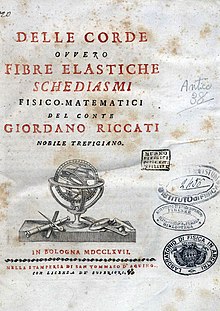The year 1782 in science and technology included many events, some of which are listed here.

Giuseppe Vitali was an Italian mathematician who worked in several branches of mathematical analysis. He gives his name to several entities in mathematics, most notably the Vitali set with which he was the first to give an example of a non-measurable subset of real numbers.

Jacopo Francesco Riccati was a Venetian mathematician and jurist from Venice. He is best known for having studied the equation which bears his name.
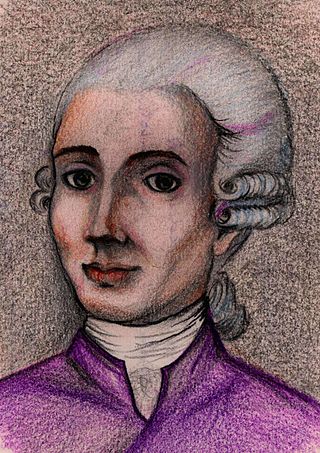
Giovanni Francesco Giuseppe Malfatti, also known as Gian Francesco or Gianfrancesco was an Italian mathematician. He was born in Ala, Trentino, Holy Roman Empire and died in Ferrara.

Giampietro Zanotti (1674–1765) was an Italian painter and art historian of the late-Baroque or Rococo period.
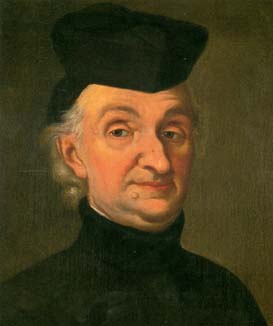
Vincenzo Riccati was a Venetian Catholic priest, mathematician, and physicist.

Giusto Bellavitis was an Italian mathematician, senator, and municipal councilor. According to Charles Laisant,
Edoardo Zavattari was an Italian zoologist who was a director at the Institute of Zoology in the Sapienza University of Rome from 1935 to 1953. He supported fascism and antisemitism on the basis of his ideas from biology and was a signatory to the "Manifesto della Razza".
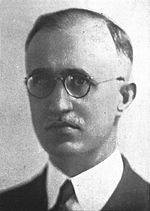
Attilio Palatini was an Italian mathematician born in Treviso.

Ramiro Rampinelli, born Lodovico Rampinelli, was an Italian mathematician and physicist. He was a monk in the Olivetan Order. He had a decisive influence on the spread of mathematical analysis, algebra and mathematical physics in the best universities of Italy. He is one of the best known Italian scholars in the field of infinitesimal mathematics of the first half of the 18th century.

Tomaso Catullo (1782–1869) was a Venetian physician, geologist, paleontologist, zoologist and educator of outstanding work in the Università di Padova.
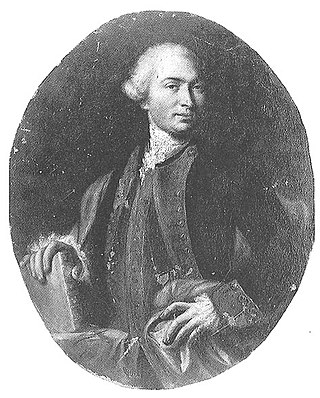
Antonio Maria Lorgna (1735-1796) or Antonio Mario Lorgna was a mathematician from Italy in the 18th century, founder of the Accademia nazionale delle scienze.
Federico Cammeo was an Italian jurist and an important figure in the public law of the Fascist era in Italy.

Antonio Collalto was an Italian mathematician and physicist.

Domenico Guglielmini was an Italian mathematician, chemist and physician, active and successful mainly in Bologna and Padua.

Cassa di Risparmio della Marca Trivigiana, also known as Cassamarca in short, was an Italian savings bank headquartered in Treviso, Veneto. The history of the bank goes back to 1496 when the charitable institution Monte di Pietà di Treviso was founded. The savings bank was established by the Monte in 1907, following a first bank spinoff in 1822 that ended up being absorbed in 1872 by the Cassa di Risparmio delle Provincie Lombarde.
Giordano Forzatè, anglicized as Jordan Forzatè, was a Paduan Benedictine monk and religious leader. For his noble background, peacemaking efforts, and monastic reforms, the Chronicle of the Trevisan March calls him the pater Padue, "father of Padua".

Ernesto Laura was an Italian mathematician born in Porto Maurizio.
Clemente Sibiliato or Sibilato was an Italian cleric, poet, and librarian.

Enrico Narducci was an Italian librarian, bibliographer and paleographer.
















